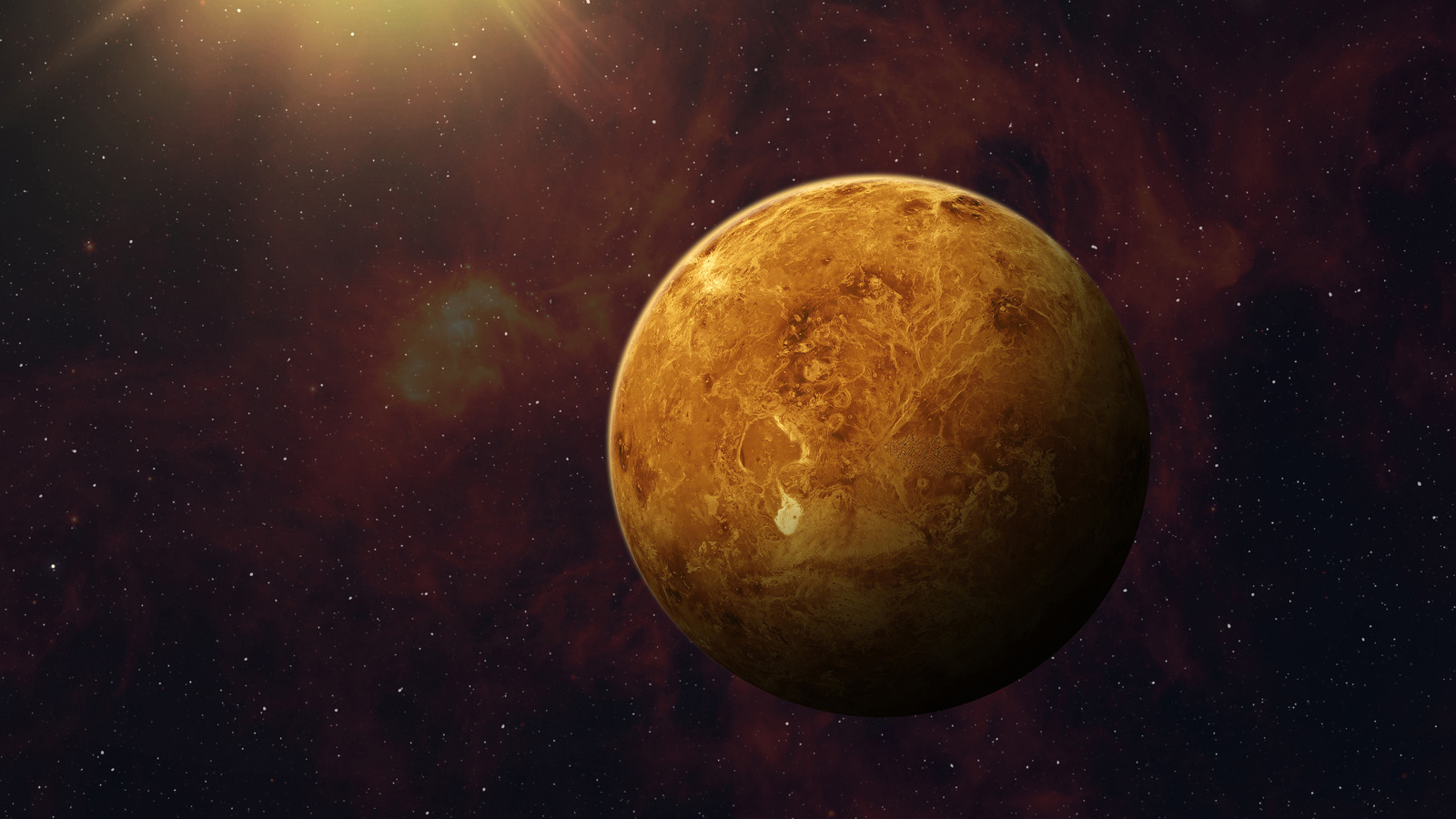Like other solar systems, our star and planets formed at the same time as debris collided into itself within a cloud of dust and gas, which is called a nebula. As a result of absorbing various gases, the characteristics of the eight planets appear vastly different, particularly in reference to their colors as we see them from the ground on Earth. These gases are actually the reason why you see yellow hues when you locate Venus in the night sky.
A thick atmosphere of mostly carbon dioxide and clouds made of sulfuric acid surround this second planet from the sun. These are mixed with another material that scientists have yet to identify, and some of them believe that it plays a part in making Venus appear yellowish in color. Nevertheless, the various materials absorb different wavelengths of light. For instance, the sulfuric acid clouds absorb the blue light — it reflects about 85% of sunlight overall, in fact — leaving the gold to orange hues that we see when our sky goes dark.
What does Venus actually look like?
Generally, the standard images that you see of Venus make the entire planet look like a bright yellow to orange ball. However, when using an optical telescope, you can see that there’s only a slight hint of yellow color to the planet. Instead, most of Venus appears to be white with swirls of yellow mixed in because so much sunlight is being reflected by the thick atmosphere and clouds.
You can get an idea of what it looks like from the images captured by NASA’s Mariner 10 spacecraft during its flyby mission to Mercury, which launched in 1973. Its camera was equipped with orange and UV spectral filters, and an engineer created a false color composite that shows colors the human eye can’t see. Additionally, the Japan Aerospace Exploration Agency has a climate orbiter — Akatsuki — that circles the planet every 10 days, tracking its cloud movements through cameras that can see infrared, UV, and visible wavelengths of light. Because of that, it captures patterns in the clouds that we can’t see, along with what look like some blue and beige hues in the atmosphere.
Although there’s no firm launch date, NASA is planning to send the Veritas orbiter and Davinci probe to study the planet from its atmosphere to its surface. Meanwhile, the European Space Agency plans to launch the EnVision orbiter in the early 2030s, giving the scientific community a better look at the planet’s activity, climate, and history from its upper atmosphere to the inner core. We’re sure to get an even better look at Venus’ actual colors when images from these missions return.

